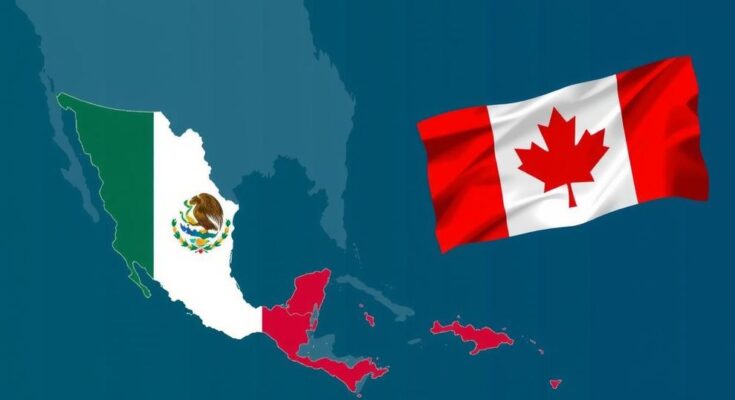President-elect Trump plans to initiate a trade war with Mexico, China, and Canada through increased tariffs, which may push U.S. companies to relocate manufacturing. Key alternative countries include Vietnam for its low costs, while other nations like Taiwan and Germany may also benefit. Experts, however, caution that many companies may choose to absorb increased costs rather than relocate, complicating the outcomes of these trade policies.
President-elect Donald Trump is poised to initiate a trade conflict with key U.S. trading partners: Mexico, China, and Canada. As these nations have historically constituted over 40% of U.S. imports, escalating tariffs could force American companies to seek alternative sources for manufacturing. Trump’s proposed tariffs include a 10% surcharge on Chinese imports and a 25% tariff on those from Mexico and Canada, intended to stimulate domestic production.
Trade experts express skepticism regarding the effectiveness of this strategy. Historically, previous tariff increases resulted in minimal reversal of production back to the U.S. due to the existing lack of infrastructure and higher domestic production costs. Consequently, businesses may shift their manufacturing to other countries to circumvent significant tariffs, notably turning towards nations such as Vietnam, which has seen its exports to the U.S. soar significantly in recent years.
Vietnam stands as a primary candidate for companies looking to relocate, with experts noting that while it is an affordable manufacturing hub, a sudden influx of businesses could lead to supply constraints and increased production costs. Industries such as automotive could see shifts towards European manufacturers like Germany, while Southeast Asian nations including Indonesia, Bangladesh, and Cambodia may rise in apparel production.
In the electronics sector, countries like Taiwan and Japan are expected to enhance their output in response to the potential tariffs. However, logistical challenges may arise, and many companies might prefer to retain existing contracts, absorbing higher costs rather than incurring the expenses associated with relocation. Data indicate that tariffs have not led to a complete halt in imports from China, suggesting that businesses prioritize overall production costs over tariff avoidance, as evidenced by fluctuations in the share of imports from various nations over recent years.
The potential trade war initiated by Donald Trump against major U.S. trading partners arises from his intention to impose aggressive tariffs. Historically, these three nations — Mexico, Canada, and China — have played a substantial role in U.S. imports, prompting concern about where American companies might pivot for manufacturing. The proposed tariffs are seen as a strategy to invigorate domestic manufacturing; however, experts suggest that this approach may not yield the intended results due to existing market dynamics and production capacities in foreign countries. The likelihood of businesses relocating their manufacturing operations has prompted discussions about alternative countries that may gain from this trade war. In light of rising tariffs, the direction of U.S. imports may shift significantly, with particular emphasis on Southeast Asia as potential beneficiaries, especially Vietnam, which has seen promising growth as a manufacturing hub amid ongoing trade tensions with China.
In summary, President Trump’s proposed trade war may prompt significant shifts in U.S. manufacturing dynamics. While intentions to bolster domestic production are evident, expert analysis suggests that many businesses might not move operations back to the U.S. due to existing costs and infrastructure challenges. Instead, countries such as Vietnam, Taiwan, and others in Southeast Asia may emerge as primary alternatives for American companies seeking to avoid hefty tariffs. The trade landscape will likely continue to evolve as businesses prioritize cost efficiency amid changing political and economic conditions.
Original Source: www.cnn.com




